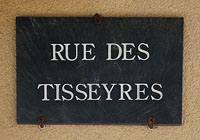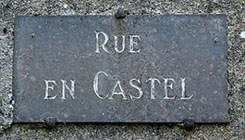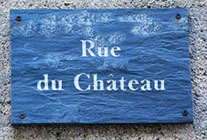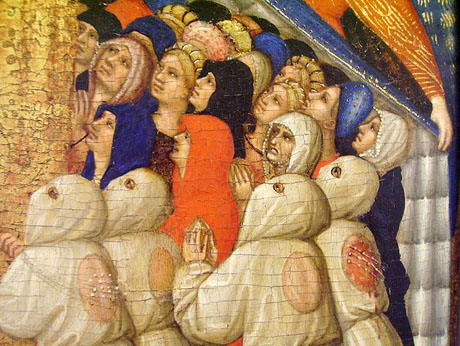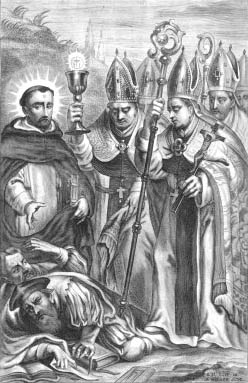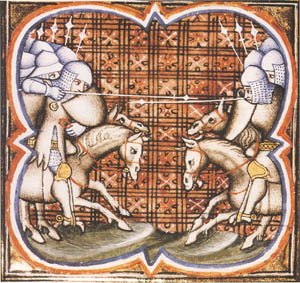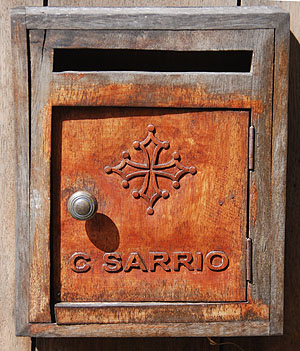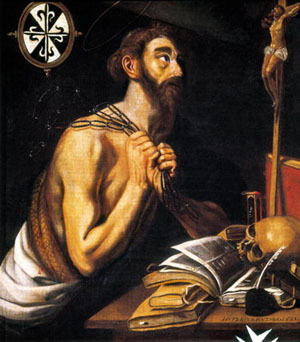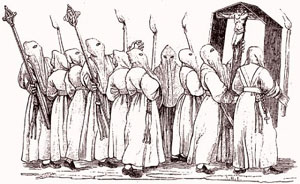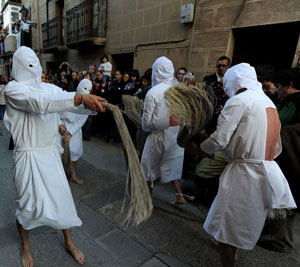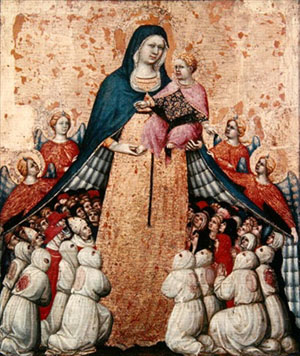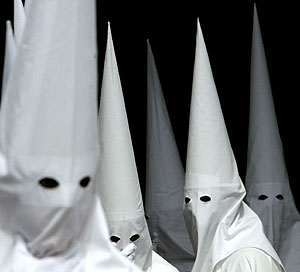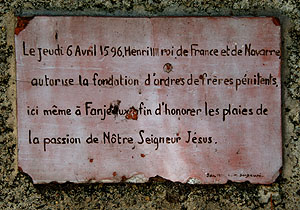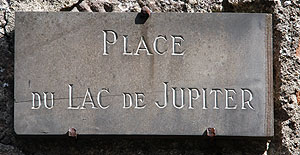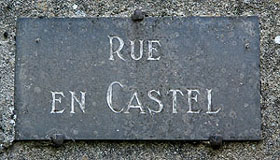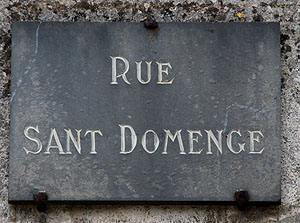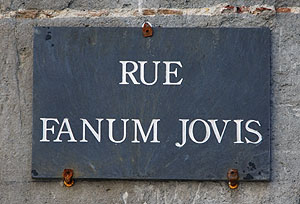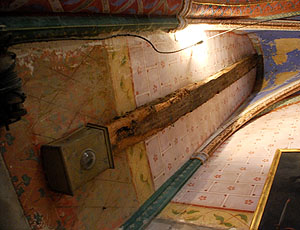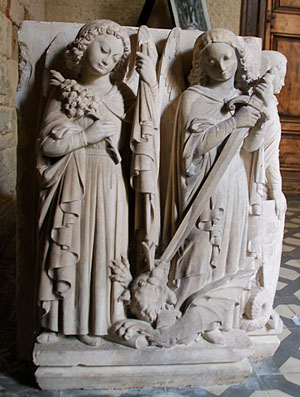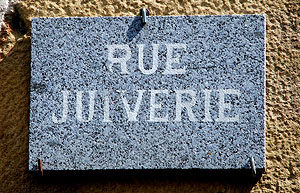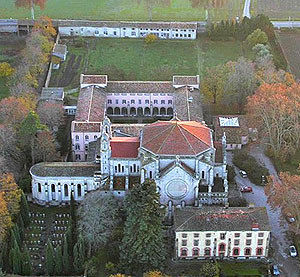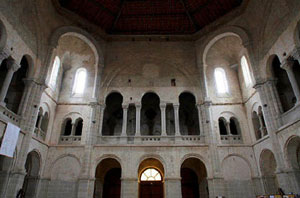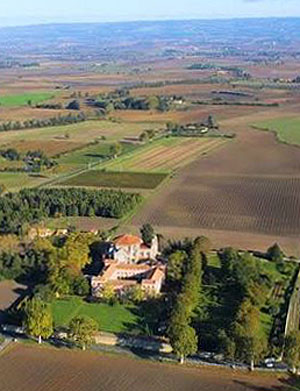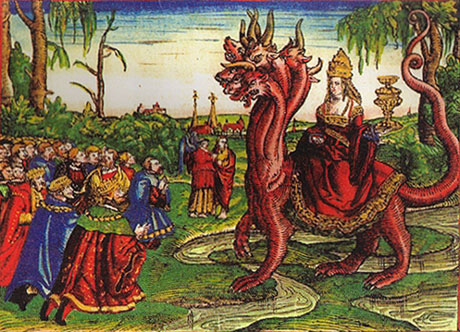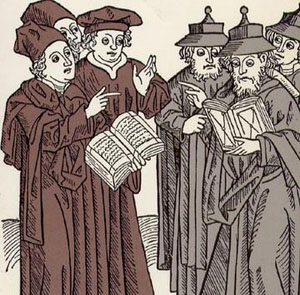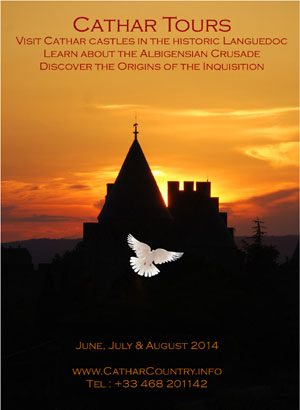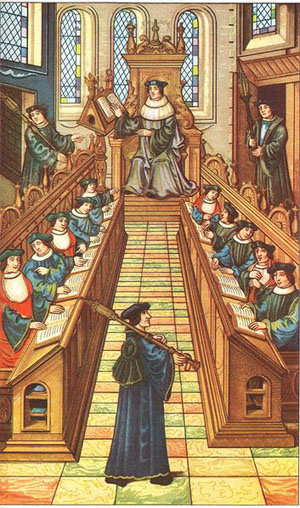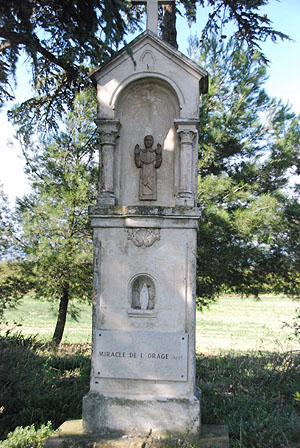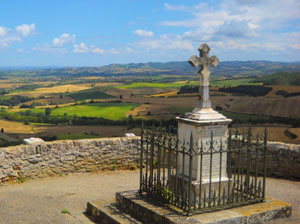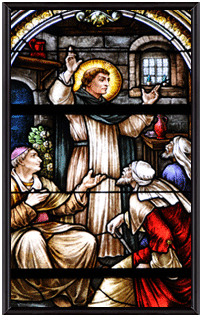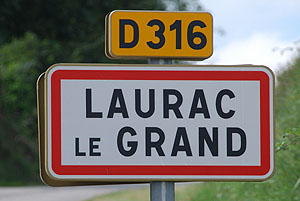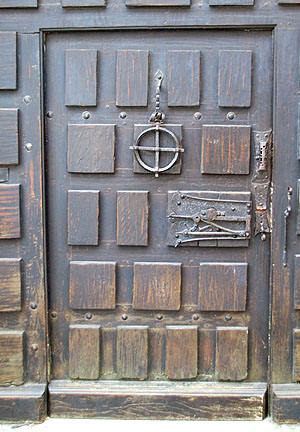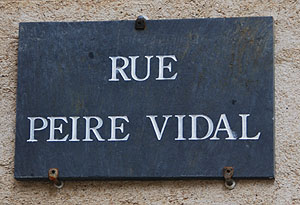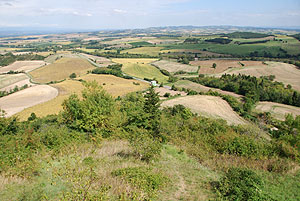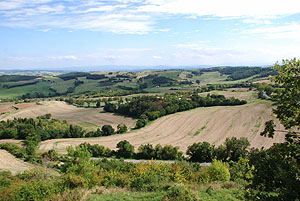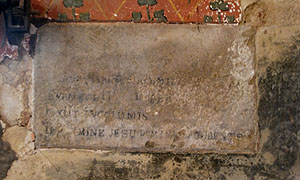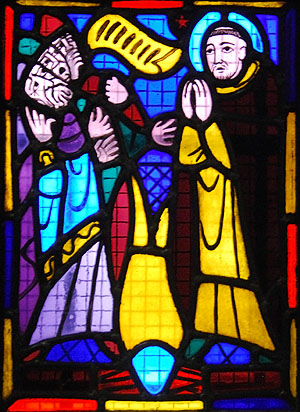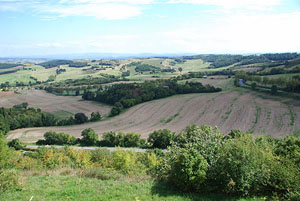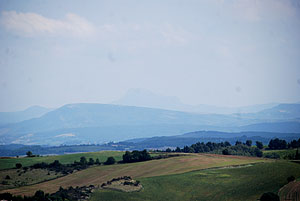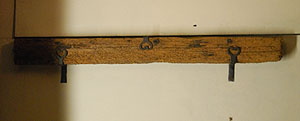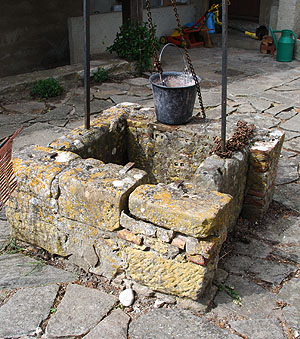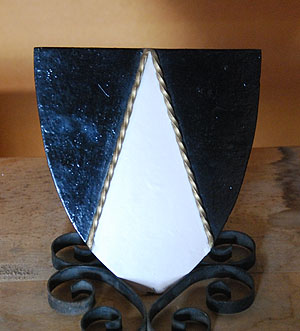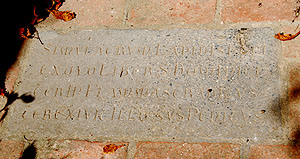Cathar Castles
|
|
|
|
|
|
|
||||||||||||||||||||||||||||||||||||||||||||||||||||||||||||||||||||||||||||||||||||||||||||||||||||||||||||||||||||||||||||||||||||||||||||||||||||||||||||||||||||||||||||||||||||||||||||||||||||||||||||||||||||||||||||||||||||||||||||||||||||||||||||||||||||||||||||||||||||||||||
|
|
Castle of Fanjeaux, (
|
|
||||||||||||||||||||||||||||||||||||||||||||||||||||||||||||||||||||||||||||||||||||||||||||||||||||||||||||||||||||||||||||||||||||||||||||||||||||||||||||||||||||||||||||||||||||||||||||||||||||||||||||||||||||||||||||||||||||||||||||||||||||||||||||||||||||||||||||||||||||||||||||
AddressContact James McDonald Tel from the US: 010 33 468 201142 Tel from the UK: 01 33 468 201142 Tel from France: 0468 201142 Tel other: + 33 468 201142 e-mail castlesandmanorhouses@gmail.com |
|
|||||||||||||||||||||||||||||||||||||||||||||||||||||||||||||||||||||||||||||||||||||||||||||||||||||||||||||||||||||||||||||||||||||||||||||||||||||||||||||||||||||||||||||||||||||||||||||||||||||||||||||||||||||||||||||||||||||||||||||||||||||||||||||||||||||||||||||||||||||||||||||
Google Maps |
|
|||||||||||||||||||||||||||||||||||||||||||||||||||||||||||||||||||||||||||||||||||||||||||||||||||||||||||||||||||||||||||||||||||||||||||||||||||||||||||||||||||||||||||||||||||||||||||||||||||||||||||||||||||||||||||||||||||||||||||||||||||||||||||||||||||||||||||||||||||||||||||||
|
|
|
||||||||||||||||||||||||||||||||||||||||||||||||||||||||||||||||||||||||||||||||||||||||||||||||||||||||||||||||||||||||||||||||||||||||||||||||||||||||||||||||||||||||||||||||||||||||||||||||||||||||||||||||||||||||||||||||||||||||||||||||||||||||||||||||||||||||||||||||||||||||||||
Location
Fanjeaux is located in the Aude Department of the Languedoc, west of Carcassonne. In the medieval period Fanjeaux was culturally and strategically important, overlooking the plain of Lauragais, and connecting it to the Razes. The most direct road from Carcassonne passed through Fanjeaux on its way to Mirepoix, an important market town. Fanjeaux, like Carcassonne and Mirepoix, was a centre of Cathar belief. Two different roads connect the town of Fanjeaux to the nearby convent of Prouille (Occitan Prouilhe). Signposts direct drivers to a modern tree-lined road that curves its way down the hill to Fanjeaux. This road is therefore used by tourists. A more direct smaller road is nominally for farm vehicles, but all the locals use it, so it is far busier than the main route. |
|
|||||||||||||||||||||||||||||||||||||||||||||||||||||||||||||||||||||||||||||||||||||||||||||||||||||||||||||||||||||||||||||||||||||||||||||||||||||||||||||||||||||||||||||||||||||||||||||||||||||||||||||||||||||||||||||||||||||||||||||||||||||||||||||||||||||||||||||||||||||||||||||

|
||||||||||||||||||||||||||||||||||||||||||||||||||||||||||||||||||||||||||||||||||||||||||||||||||||||||||||||||||||||||||||||||||||||||||||||||||||||||||||||||||||||||||||||||||||||||||||||||||||||||||||||||||||||||||||||||||||||||||||||||||||||||||||||||||||||||||||||||||||||||||||||
History
In Roman times a temple to Jupiter (Jove) stood at the highpoint of the town, next to a lake. (Lakes on the top of hills are not common phenomena and this one was presumably considered sufficiently remarkable that it was attributed to the King of the gods). The modern name of the town comes from its Occitan name, itself derived from the Roman name, Fanum Jovis ("Temple of Jove"). Both temple and lake are commemorated in street names. A possible vestige of the Roman period are the four medieval town gates, placed roughly north, south, east and west, a typical Roman arrangement. In the medieval period Fanjeaux was a large castrum, still with its four entries. It was surrounded by a moat and defended by a rampart with fourteen towers. Two of the original four entries today serve as reminders of the medieval gates which controlled entry into the town. Like most Languedoc castra it had a large castle within its walls, almost nothing of which remains today. The castle of Fanjeaux, "which is like a paradise" is mentioned the Occitan troubadour Peire Vidal in the late twelfth century in his song "Mos cors s'alegr' ". The original castle was built the north-western end of town and occupied by the Durfort family. Already ruined in the late fourteenth century, it has now completely disappeared. The site is occupied by Dominican sisters (Dominicaines de las Sainte Famille). Fanjeaux was a great centre of Cathar belief and home to around 50 Cathar families. Two dominant coseigneurs were Na (ie Lady) Cavaers and Guilhem de Durfort. The town included houses for Cathar Parfaites, including one founded by Esclaremond de Foix. According to Catholic sources there were no fewer than ten houses of Parfaites here. In these houses women lived communally, living the ascetic celibate lives of Parfaites, offering education to children, food to the poor, medicine to the sick, shelter to the aged, and refuge to the persecuted. In 1193 Guilhabert de Castres, a Cathar bishop, settled in Fanjeaux, where there seems to have been no incumbent Catholic priest. In a great assembly held in 1204 at Fanjeaux, presumably in the Hall of the Château of the Durforts, the Cathar Bishop Guilhabert de Castres conferred the Consolamentum on four noblewomen: Esclaremond de Foix and three women from the House of Durfort: Fays de Durfort (mother of Sicard and Pierre de la Hille), her daughter in law Aude de Fanjeaux (wife of Pierre de Durfort), and her close relative Raymonde de Saint-Germain (wife of Guilhem de Durfort). The ceremony was conducted in the presence of Esclaremond's brother, Raymond-Roger de Foix, Count of Foix. Esclaremond was responsible for the establishment of schools for girls and hospitals in the region. She and her sister-in-law Philippa famously ran a House for Parfaites at Dun in the Pyrenees, which functioned as a home for aged Parfaits and a girls' school. A team of Cistercian legates, along with the Bishop of Osma and Dominic de Guzman, a Spanish cannon, set out to evangelise the Lauragais in 1206. That same year St. Dominic de Guzman, established himself in Fanjeaux and at nearby Prouilhe where he established a community that would later evolve into the Dominican Order. Dominic stayed several times in Fanjeaux between 1206 and 1216) where he was the (largely absent) parish priest, signing himself Cure de Fanjeaux as well as Prieur de Prouille. The lack of competent priests was a constant problem for the Catholic Church. Most priests in the Languedoc, as elsewhere, were absent or indolent. Others had already converted to the Cathar faith. As one Catholic authority puts it:
One aspect of Catharism that horrified Catholics in the medieval period and well into the twentieth century, was the prominent role played by women. They enjoyed freedom and authority far in excess of what churchmen thought proper. Cathar women were evangelists and apostles just as much as men.
One of these meetings, a public debate known as the The Colloquy of Montréal (aka the "Conference of Montreal" or the "Conference of Pamiers"), was held between Catholics and Cathars in 1207. Dominic de Guzman was part of the Catholic team. Against him were Guilhabert de Castres, and Esclaremond de Foix, a Parfaite as well as a high-born and widely respected noblewoman. It was at this debate that one of Dominic's acolytes, following Saint Paul, famously told Esclaremond publicly that women were not capable of discussing religious matters, and should restrict themselves to women's work:
In front of an educated Occitan audience, familiar with a much greater degree of sexual equality, and aware of Eclaremond's reputation, this approach probably undermined the Catholic position even before the debate started. These debates were held in front of independent juries who voted at the end of the debate. Surviving records, all Catholic, suggest that the Cathars generally won since the chroniclers restrict themselves to producing reasons to regard the vote as invalid or unfair, or complaining about the bias of jury members. This might explain why Dominic's reputation is not based on contemporary records of his success in converting Cathars by argument, but on a series of improbable miracles. The Colloquy of Montréal would be the last debate between the Cathars and the Roman Catholic Church. The Church recognised that a more robust approach was needed. Saint Dominic, apparently having given up on voluntary conversions, decided that force was needed and set off for Rome. The following year Pope Innocent III launched the Albigensian Crusade against the Cathars of the Languedoc. Dominic induced nine Cathar women from Fanjeaux to join his new rival establishment in nearby Prouille. From Percin's Monumenta conventus Tolosani, we know the names of these first nine "converts" - all from the impoverished noblesse of the Lauraigais: Adalaïde, Raymonde de Passarin, Richarde de Barbaira, Jordan, Guillelmine de Belpech, Curtolane, Clarette, and Gentian. According to Dominican sources this was soon after The Colloquy of Montréall (although he founded his monastery a year earlier). It is not known what his inducements were for these first nine, but we do know that Dominic was the founder of the Dominican Order which a few years later was conducting the Medieval Inquisition on behalf of the papacy - apparently because Dominic's followers were already experienced in the techniques that were to characterise the Inquisition. Already, after 1209 we know that the Catholic Church was dispossessing noble Cathar families and in many cases forcing their daughters into Dominic's new convent at Prouille, financed by the lands seized from their families. The families themselves became refugees in their own land, known as "faidits". Suspicions about the use of undue pressure is increased by the use of fictions in Catholic accounts. According to Catholic sources, Dominic achieved his initial nine conversions by one of his "miracles" facing down a soot-black cat-like demonic apparition of terrific size with savage eyes and formidable claws, in front of nine young women. (The Miracle of the Black Cat and the First Nine Dominican Nuns) The Albigensian Crusade was preached in 1208. The Crusaders left France in 1209 headed down the Rhone Valley to the Languedoc. The first cities to fall were Béziers and Carcassonne. After the fall of Carcassonne, their Viscount was imprisoned and soon afterwards he was dead. Some dependant towns surrendered without a fight. Among them were Fanjeaux as well as Albi, Castelnaudary, Castres, Limoux, Lombers and Montréal. Fanjeaux was taken over by the crusaders, forcing the Cathar preachers as well as many "believer" inhabitants to flee to other towns. The Cathar Bishop Guilhem of Castres withdrew to the castle of Montségur, which was to become the last Cathar stronghold, and in which he died in 1244. The new leader of the Crusade, Simon de Montfort, recognised the strategic position of Fanjeaux and immediately made it his headquarters. De Montfort was at Fanjeaux shortly before the Battle of Muret. As one Catholic source relates.
Dominic de Guzman became Saint Dominic in 1233 twelve years after his death in 1221. Also in 1221 the Count of Toulouse retook Fanjeaux along with nearby Montréal. After twenty years of intermittent fighting throughout the Languedoc, a peace treaty was signed in 1229 in the town of Meaux, near Paris, officially ending the Albigensian Crusade and giving the King of France power over the Languedoc. Under the terms of the treaty the walls of Fanjeaux were to be pulled down and its moat filled, so that it should no longer be a defensive fortification. (The danger of the townspeople in the Languedoc rising up against their French rulers was still current in the fourteenth century and flared up periodically into the nineteenth) From 1303 a new castle was built in Fanjeaux, to the east of the parish church, The New Castle was a royal palace, where royal justice was dispensed. Only one of its towers, which housed the royal prison, still existed in the late seventeenth century. Vestiges still remain today near to the Rue du Château and the Rue En Castel.
In October 1323, King Charles IV (le Bel) authorised the consuls of Fanjeaux to build a church in the old château of the Lords de Durfort to commemorate Dominic's book burning miracle (Le Miracle de Feu). As at the Ville Basse at Carcassonne and other towns deprived of their city walls, Fanjeaux provided rich and easy pickings for The Black Prince in 1355 when he ravaged the Languedoc. Fanjeaux was burnt to the ground. In the sixteenth century, the village experienced new prosperity through the cultivation of pastel, and several hotels particuliar in the town date from this period. One of them the Hotel Gramont houses a photographic exhibition on the history of the Cathars. Northeast of the parish church, are the remains of the Chapelle des Penitents Blancs (White Penitents' chapel) built in 1596. The Pénitents Blancs were Catholic fraternities, popular in France, Spain and Italy, many of them established around Dominican Convents. Penitents dressed in white hoods and robes. Hoods had just small eye-holes and robes had special flaps at the back which could be opened to expose the flesh. Penitents would then flagellate themselves, as Saint Dominic did, or sometimes each other, a practice known as "mortification of the flesh". Flails were often fitted with iron balls or blades in order to draw blood and maximise the pain and bloodflow. Flagellation was often carried out in public during Holy Week. The Penitents Blancs no longer exist in Fanjeaux and nothing remains of their chapel except a modest plaque, though fraternities of Penitents Blancs still exist throughout southern European cities and public self-flagellation is still widely practised during Holy Week. Dominicans are now more discrete about public flagellation and practice "the discipline" in the privacy of their convents.
The Lake of Jupiter was drained in 1934.. In 1935 the Dominicaines de la Sainte Familles (Dominican Sisters of the Holy Family) moved into the old Dominican Convent in Fanjeaux, on the site of Guilhem Durfort's original castle.
|
|
|||||||||||||||||||||||||||||||||||||||||||||||||||||||||||||||||||||||||||||||||||||||||||||||||||||||||||||||||||||||||||||||||||||||||||||||||||||||||||||||||||||||||||||||||||||||||||||||||||||||||||||||||||||||||||||||||||||||||||||||||||||||||||||||||||||||||||||||||||||||||||||
Things to see
Today almost nothing remains of historical interest. The temple to Jupiter was replaced by a Christian church in early Christian times. Today, Notre-Dame de l'Assomption stands on the site.
Nothing remains of Guilhem Durfort's castle, and almost nothing of the new Royal castle - just a couple of walls of what was once the prison, and an outbuilding where according to legend, Saint Dominic lived. Similarly nothing remains of the castrum walls or of its 14 towers. You can however make out the location of the walls and outer ditch from the road that surrounds the modern village. Two entries also mark the medieval town gates. The house of the Parfaites is long gone - even its location is now unknown.
The remnants of Saint Dominic are thin on the ground. A cross marks the supposed spot, overlooking Prouille, where he experienced one of his fire miracles, but the adjacent chapel of Seignadou is now a farm shed. The house claimed to have been his might or might have belonged to him (the man in the Tourist Office thinks not). The convent of the Sainte Famille survives along with its chapel and relic, but is spectacularly unprepossessing. At least three wooden beams are claimed to be the one that was hit by the miraculous book during Dominic's debate with a Cathar. (Relics are well-known to miraculously reproduce themselves)
The Church of Our Lady of the Assumption, (l'église Notre-Dame de l'Assomption) is a typical example of Southern Gothic, constructed on the site of the Roman temple of Jupiter. The present church was built in the late thirteenth century (1278-1281). It has some interesting features, notably the Gothic entrance with six arches, a St Roch chapel, and a baroque monstrosity at the east end of the apse in the chancel The foundation stone is set into a wall under the porch. The bell tower is an octagonal tower, pierced by Gothic arches. The interior has a remarkable baroque decoration of the eighteenth century. Six vaulted chapels were built between the buttresses. Up until a few years ago, the parish priest of Fanjeaux said mass in Occitan at Christmas and on the feast of St. Roch (or St. Roque) the patron saint of the farmers of Fanjeaux. |
|
|||||||||||||||||||||||||||||||||||||||||||||||||||||||||||||||||||||||||||||||||||||||||||||||||||||||||||||||||||||||||||||||||||||||||||||||||||||||||||||||||||||||||||||||||||||||||||||||||||||||||||||||||||||||||||||||||||||||||||||||||||||||||||||||||||||||||||||||||||||||||||||
Village Layout
|
||||||||||||||||||||||||||||||||||||||||||||||||||||||||||||||||||||||||||||||||||||||||||||||||||||||||||||||||||||||||||||||||||||||||||||||||||||||||||||||||||||||||||||||||||||||||||||||||||||||||||||||||||||||||||||||||||||||||||||||||||||||||||||||||||||||||||||||||||||||||||||||
Peire Vidal
|
|
|||||||||||||||||||||||||||||||||||||||||||||||||||||||||||||||||||||||||||||||||||||||||||||||||||||||||||||||||||||||||||||||||||||||||||||||||||||||||||||||||||||||||||||||||||||||||||||||||||||||||||||||||||||||||||||||||||||||||||||||||||||||||||||||||||||||||||||||||||||||||||||
|
|
|
|
||||||||||||||||||||||||||||||||||||||||||||||||||||||||||||||||||||||||||||||||||||||||||||||||||||||||||||||||||||||||||||||||||||||||||||||||||||||||||||||||||||||||||||||||||||||||||||||||||||||||||||||||||||||||||||||||||||||||||||||||||||||||||||||||||||||||||||||||||||||||||||
Monastère de Prouille (Occitan Prouilhe)
|
|
|||||||||||||||||||||||||||||||||||||||||||||||||||||||||||||||||||||||||||||||||||||||||||||||||||||||||||||||||||||||||||||||||||||||||||||||||||||||||||||||||||||||||||||||||||||||||||||||||||||||||||||||||||||||||||||||||||||||||||||||||||||||||||||||||||||||||||||||||||||||||||||
Colloquy of Montréal
Here is a Catholic account of the Colloquy of Montréal, (which the author seems to think took place in 1206 rather than 1207)
This account goes on to explain that the judges refused to deliver judgement, a problem resolved by the Miracle of the Book (Le Miracle de Feu) It is suspect on a number of counts, disguising the murder of Lord Amaury of Montreal and his of his sister Lady Giraude of Lavaur, at Lavaur in 1210 - a scandal and a war crime even by the standards of the thirteenth century. Both prisoners of Amaury was summarily hanged and Giraude was murdered by being thrown down a well. Impartial contemporary sources tell us that Lady Giraude was known for her generosity and hospitality. It is also worth noting that in reality the arbiters were invariably either the sponsors of the debate, or selected for their independence and pre-approved by both sides. It is also significant that the Catholic Church was being described as "[the Whore of] Babylon, drunk with the blood of the martyrs and saints of Christ." two or three years before the start of the Albigensian Crusade, which suggests that Cathars were already being heavily persecuted before 1207.
|
|
|||||||||||||||||||||||||||||||||||||||||||||||||||||||||||||||||||||||||||||||||||||||||||||||||||||||||||||||||||||||||||||||||||||||||||||||||||||||||||||||||||||||||||||||||||||||||||||||||||||||||||||||||||||||||||||||||||||||||||||||||||||||||||||||||||||||||||||||||||||||||||||
Miracle of the Sheaves
|
||||||||||||||||||||||||||||||||||||||||||||||||||||||||||||||||||||||||||||||||||||||||||||||||||||||||||||||||||||||||||||||||||||||||||||||||||||||||||||||||||||||||||||||||||||||||||||||||||||||||||||||||||||||||||||||||||||||||||||||||||||||||||||||||||||||||||||||||||||||||||||||
|
"Field of the Sheaves." The picture of the miracle in Saint Vincent's, the Parish Church of Montreal |
 |
This is another of Saint Dominic's miracles that today receives very little publicity, since, mysteriously, God seems to softened his line on Sunday working, once a capital crime, but now not even a minor sin. (The painting above, in the Church at Montreal, is difficult to see and had to be specially lit in order to take a photograph in August 2014)
|
Miracle of the Sheaves |
 |
|
Monument in the "Field of the Sheaves." on the D119 at N43.20810, E2.18275 |
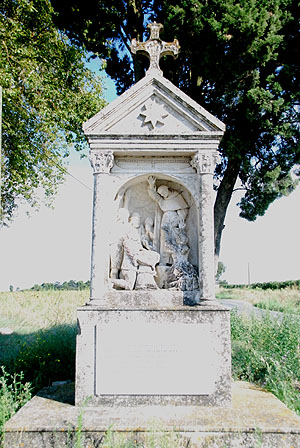 |
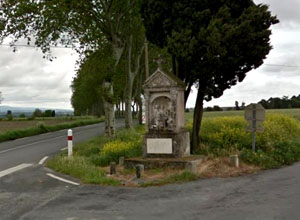 |
Miracle of the Storm
("Miracle de l'orage")
The following is a Catholic account of the Miracle of the Storm in by C. M. Antony in ST. DOMINIC'S COUNTRY
A few hundred yards further on, on the other side of the road, is another shrine commemorating a miracle of later date which took place on one of St. Dominic's many journeys between Montreal and Carcassonne. It is known as the Miracle of the Storm. The Saint was preaching one sultry afternoon to a group of peasants working in the surrounding fields and vineyards, when the muttering of thunder was heard, the heavy sky grew dark with clouds, and began to pulse with lightning. One of the sudden, terrible storms which so often destroyed a harvest in half an hour was about to break. His hearers implored Dominic to pray that the tempest might be averted. He bade them not to fear, for not a hair of their heads would be wet with the rain, which had begun to fall in torrents a little way off, and that none of their crops should suffer from it. They remained till his sermon was finished, and departed, untouched by the storm, to find that the Saint's prophecy had been fulfilled, and that their fields had taken no harm. According to local tradition, no rain has fallen ever since on the spot, now marked by a tall cross surmounting a shrine, round which is planted a little grove of cypress and yew.
Wreathed in trails of flowering periwinkle. It is perhaps one of the most beautiful, though one of the least known, Holy Wells in the world. Here Dominic and his companions would turn aside from the dusty road to rest by the fountain beneath the spreading trees, and there slake their thirst ; "for," says Gerard de Frachet, "when the Saint, weary and harassed with cares, was going to stay in a house belonging to seculars, he first drank deeply at some fountain or neighbouring spring, fearing lest his thirst, increased by the fatigue of the journey, should scandalise his hosts. For his liveliest fear was ever that he might become an occasion of scandal to those around him ; this he dreaded above all. "The ice-cold water — to which have often been ascribed miraculous properties — is still as deliciously fresh and clear as it was in the time of our Saint, springing from the heart of the limestone rock.
A turn of the road and Montreal comes into view dominating the illimitable plain, all rugged with low hills. Here, hot and weary, St. Dominic entered for the first time with the Legates on that eventful 24th July 1206, to take part in a Conference which was to last fifteen days. As was usually the case, it was held in the great hall of the castle.
IN ST. DOMINIC'S COUNTRY, LIVES OF THE FRIAR SAINTS p 34
The tradition that rain never falls on the spot cannot be wholly reliable, since rain fell there on the day that the adjacent photograph was taken in September 2014.
|
Monument to the Miracle of the Storm |
|
|
|
|
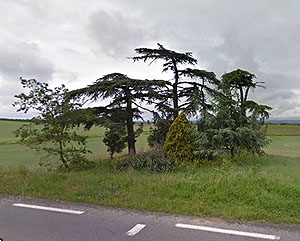 |
Dominic's Miracle of the Book
(Le Miracle de Feu
aka le Miracle de la Cédule)
One legend relates that when Dominic's followers threw his speaking notes into a fire after The Colloquy of Montréal, the text proved so holy that the flames would not burn them. The papers flew up into the air. In later versions Dominic challenged Guilhabert de Castres in public during the course of the debate. Catholic and Cathar books belonging to Dominic and Guilhabert were both thrown into a fire. Dominic's survived the flames hovering in the air above the fire, while Guilhabert's burned like any other book.
There are a number of increasingly impressive accounts of the miracle. In this version below the author has conflated the The Colloquy of Montréal with the earlier legend of events in Fanjeaux, concealing the failure to win over the independent judges at Montréal and simultaneously providing an excuse for burning other people's books.
"One day a famous disputation was being held at Fanjeaux and a large number of the faithful and unbelievers had gathered. Many of the former had written their own books containing arguments and authorities in support of the faith. After these books had been inspected, the one written by Blessed Dominic was commended above the others and unanimously accepted. Accordingly, his book and that produced by the heretics were presented to three judges chosen with the assent of both sides, with the understanding that the side whose book was chosen as the more reasonable defense should be regarded as having the superior faith.
After much wrangling, the judges came to no decision. Then they decided to cast both books into a fire and, if either of them was not burned, it would be held as containing the true faith. So they built a huge fire and cast the books therein. The heretical book was immediately consumed by the fire, but the one written by the man of God, Dominic, not only escaped burning, but, in the sight of all, leaped far from the fire. For a second and a third time, it was cast into the fire, but each time it leaped back and thereby openly testified to the truth of its doctrine and the holiness of the person who had written it."
From the Libellus of Blessed Jordan of Saxony.
In yet later versions all this took place before impartial judges who unanimously agreed that Dominic had won the debate.
|
The Miracle of the Book |
 |
In yet another form of the evolving legend, the episode had evolved into an ordeal by fire in which Dominic's text lodged on a roof beam visibly singeing it. Several sites in Fanjeaux, including the village church and a Dominican chapel claim to posses the very beam, still bearing its miraculous burn marks.
One beam from the 'Miracle of fire' is now in the parish church where the inhabitants of Fanjeaux carried it in 1820 after the collapse of the chapel where the miracle had taken place. This chapel was located at the Preaching Brothers' convent. The Preaching Brothers' convent now belongs to the Dominicaines Des Sainte Famille, who miraculously, also possess the beam from the Miracle of Fire, housed in its own "chapel" - more like a small external niche.
The idea that holy books can miraculously be distinguished from others is an old one. The same legend is associated with the selection of books for the biblical canon at Nicaea in 324. As Voltaire observed in his Dictionnaire Philosophique:
It is reported in the supplement of the council of Nicaea that the fathers, being very perplexed to know which were the cryphal or apocryphal books of the Old and New Testaments, put them all pell-mell on an altar, and the books to be rejected fell to the ground. It is a pity that this eloquent procedure has not survived.
The Château de Durfort
The following Catholic account relates how the Château de Durfort was sold to Dominicans, who had a chapel there - on the site of the hall where the miracle of the book supposedly occurred. When the Château and its hall were destroyed by the Black Prince a few years later, a Dominican monastery (with a new chapel) was built on the site.
The hall where this miracle took place was sold in 1346, by the family of De Durfort, to one of their kinsmen, then Provincial of the Dominicans of Toulouse, in order that a chapel might be built on the spot. "Considering," says the deed of sale, " that by virtue from on High a miracle has been wrought by fire in this house in honour of Blessed Dominic and of the Holy Faith . . . desiring with all our hearts that a chapel should be constructed and an altar to Blessed Dominic erected here to the glory of God, of His blessed Mother Mary, of all the Saints, and the monastery of Prouille, we sell," &c. The chapel had already been built, for ten days later the Provincial and the Prior of Prouille took possession of it "in the presence of numerous friars and the whole population of Fanjeaux." Two years later the first convent of friars was founded in Fanjeaux, but this building having been destroyed by the Black Prince — the English ravaged the town most cruelly — the convent was rebuilt close to the Chapel of St. Dominic, on a site specially granted by Charles V. It contained a cloister forty-two paces square, of which no traces now remain, though the restored monastery buildings still exist, and form at present the Presbytery of Fanjeaux. To the Chapel of St. Dominic was removed the beam on which the unburnt book had rested, and which had been religiously preserved at Prouille since 1209. It was hung by iron chains from the roof, at a height of 22 feet from the floor. The hearth-stone on which the fire had burnt was also preserved, and sealed beneath the altar. It was the custom of intending postulants of Prouille to come here and kiss this stone on the day preceding their entrance into the convent. At the Revolution, of course, all was confiscated or destroyed ; the chapel was razed, and the convent seized by the State; but the beam and stone — being "worthless" — were placed in the Parish Church of Fanjeaux, where they may be seen today in one of the north chapels, the latter sealed into the wall beneath the former. Below the beam is the following inscription :
Hic e voracibus flammis evangelium liber exiit incolumis
In Nomine Jesu Domino JubenteThis Gospel emerged safe from the greedy flames.
In the name of the Lord Jesus 's commandC. M. Antony, ST. DOMINIC'S COUNTRY, LIVES OF THE FRIAR SAINTS
Today the building is owned by the Dominicaines de la Sainte Famille and they have their own "Chapelle du Miracle". Both Church and Chapel purport to have not only the beam, but also the hearth stone on which the miracle occurred.
|
Saint Dominic and the Albigenses, 1480, Pedro Berruguete (Museo del Prado). |
 |
|
Detail of The Coronation of the Virgin by Fra Angelico, executed around 1434-1435, now in the Musée du Louvre of Paris, France. In this cartoon strip version Dominic gives the Carthars a Bible, which they try to burn, but the Bible hovers above the fire. |
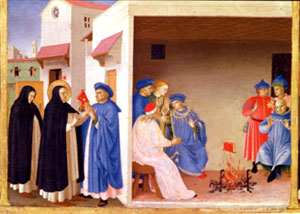 |
|
Detail of The Coronation of the Virgin by Fra Angelico, executed around 1434-1435,now in the Musée du Louvre of Paris, France. In this version, Dominic is not even in the room where the miracle takes place. |
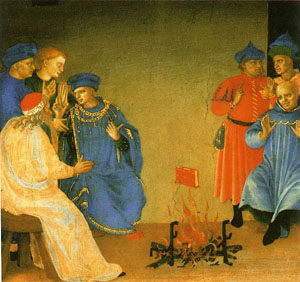 |
|
"Chapelle du Miracle" at the Convent of the Dominicaines de la Sainte Famille |
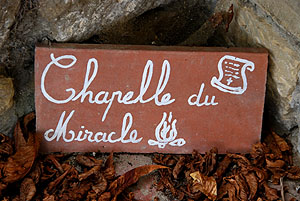 |
|
Dominicaines de la Sainte Famille now occupy the site of the Château de Durfort |
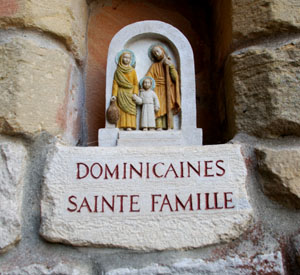 |
|
"Chapelle du Miracle" at the Convent of the Dominicaines de la Sainte Famille |
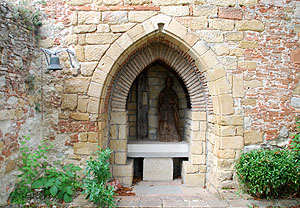 |
|
|
|
Saint Dominic burning the books of the Albigensians, miniature from Le Miroir Historial by Vincent of Beauvais, manuscript, France 15th Century. Chantilly, Château, Musée Condé (Picture Gallery And Art Museum). |
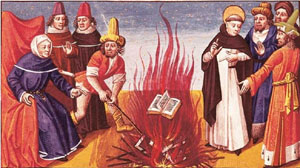 |
|
painting by Badin (XIXe), in the Collégiale |
 |
The Miracle of Seignadou
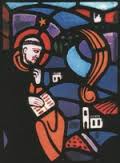
![]() Le
Seignadou is a promontory in Fanjeaux, with a panoramic view of
the Black Mountains, Mount Alaric and the Pyrenees. Saint Dominic
claimed to have experienced one of his many miracles here - he experienced
a surprising number of unremarkable miracles (like seeing off a
black black cat). This one sounds remarkably similar to witnessing
a case of ball-lightning. Ball lightning tends to occur in certain
places in volcanic areas, which might also account for the fact
that the monastery keeps burning down inexplicably.
Le
Seignadou is a promontory in Fanjeaux, with a panoramic view of
the Black Mountains, Mount Alaric and the Pyrenees. Saint Dominic
claimed to have experienced one of his many miracles here - he experienced
a surprising number of unremarkable miracles (like seeing off a
black black cat). This one sounds remarkably similar to witnessing
a case of ball-lightning. Ball lightning tends to occur in certain
places in volcanic areas, which might also account for the fact
that the monastery keeps burning down inexplicably.
In any case, for Dominic it was a miracle and he was convinced that God was telling him where to found his new monastery. He saw the the fire-ball at the tiny village of Prouille, so it was Prouille that he appropriated for his new monastery. The name of the promontory from which he witnessed the fireball, comes from Senhador, Occitan for "sign of the Lord".
Here is a Catholic account of the miracle.
On the night of 2ist-22nd July 1206, the eve of the Feast of St. Mary Magdalene, St. Dominic passed through the village towards the spot, which has ever since been called the Signadou. Just beyond the spot where the north gate then stood, a jutting angle of rock from which the ground falls away on two sides in a precipitous descent, forms a wide shelf from which a marvellous view may be gained.
....
And it was at night that St. Dominic continually came hither to pray for the souls he was seeking in this fair country unrolled like a map beneath his feet.
The hours passed by as he knelt there upon that memorable July night, his heart full of his great desire to found a convent where the women he rescued from the clutches of Satan might worship God in peace....
Suddenly, as he gazed out into the night, he saw a globe of fire like a meteor dart from the star-sown sky and circle thrice over a spot not a mile from the foot of the hill on which he knelt. Then it fell upon the ground and rested there. He knew it for what it was — the Sign of God for which he had so greatly longed, for which he had scarcely dared to pray. On the spot where it had fallen his convent was to rise. Realising this clearly, thanking God with all his heart, he yet prayed with holy prudence that if it were really what he believed, the fire might again fall from Heaven a second and a third time, that he might know of a surety that it was the spot which the Lord had chosen. His prayer was granted. Returning on the two following nights St. Dominic again saw the same prodigy, and understanding, took courage. He had recognised the spot by the light of those southern stars, and knew well to whose intercession he owed its choice. For the Sign of God had fallen upon the little sanctuary of Notre Dame de Prouille.
Convent at Prouille seen from Signadou
The rocky shelf on which he knelt has ever since been called the Signadou. In July 1538, a great cross was erected here for parochial processions. This having been destroyed at the Revolution was replaced in 1860 by the present cross of white marble, upon the pedestal of which was chiselled the ancient votive inscription :
"Saint Dominique minutant en son esprit le dessein de has tire le Monastere de Prouille et regardant alors en quel lieu il le bastirait, il vid UN soir, eslant en fervente priere une grande fiamme qui descendit a Fendroit ou est maintenant basti ce celebre Monastere ; d'ou il colligea que Dieu voulait qu'ilfitt basti en CE lieu qui avait ite honori du feu du del. Les habitans dudit Fanjeaux esleverent en memoire et a Vhomieur de CE grand Saint UN oratoire qui s'appelle le Seignadou dans laquelle il y a une croix de pierre blanche."
[my loose translation: "St. Dominic contemplating in his mind the construction of the Monastery of Prouille and overlooking a possible places to build it, spent a night in fervent prayer, and saw a great fiamme descend at the place where this famous Monastery is now built; from which he deduced that God wanted him to build on the spot honoured by fire from heaven. The inhabitants of Fanjeaux raised in memory and honour of this great Saint an oratory called the Seignadou, in which there is a cross of white stone.] "
Close by stands a shrine in the angle of a wall surmounted by a lofty stone statue of St. Dominic, gazing across the plain to Prouille. Upon the shrine, restored in our own day, is carved the blessing sent by Pope Pius IX. in 1868 :
" Deus vos benedicat et liber et a fulgure et tempestate"
["God bless you, and every free man, from lightning and tempest" ]
C. M. Antony, ST. DOMINIC'S COUNTRY, LIVES OF THE FRIAR SAINTS p 58
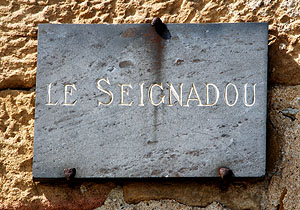 |
|
"Miracle of Signadou" a mosaic at Signadou |
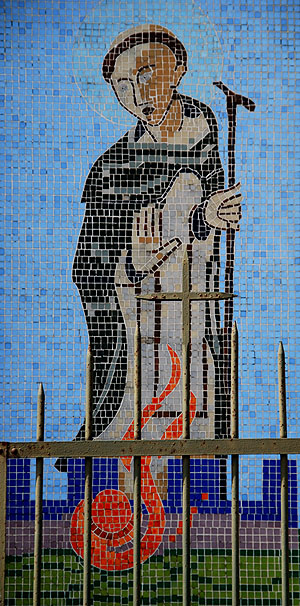 |
|
Statue of Saint Dominic at Signadou |
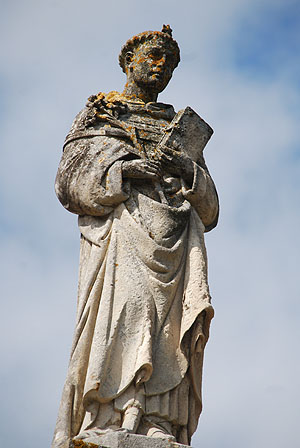 |
|
The Miracle of Signadou |
 |
The Miracle of the Black Cat
and the First Nine Dominican Nuns
No chronicle relates any of the compelling arguments that Dominic used to convert those he considered "heretics". As at Montréal, and in the "field of the sheaths", this deficit is made good by a convent miracle of the sort that impressed medieval Catholics, but modern theologians not quite so much. It may be that these miracles conceal the fact that no genuine voluntary converts were made at all. There were at most very few converts, even according to primary Catholic sources, and their conversions might well have been secured by force (as they certainly were after 1209, when refusal to recant was punished by death, as at Lavaur and Minerve).
Here is a sympathetic Catholic account of how Dominic secured the conversion of nine young women who had been educated by Cathars at Fanjeaux.
A few days after the Conference [The Colloquy of Montréal], St. Dominic, after an evening sermon in the open air — probably in the market-place — to the greater part of the people of Fanjeaux, entered the little church hard by to spend an hour in prayer. As he knelt there the door opened, and a group of young women approached him as the Greeks of old came to St. Philip, with that petition on their lips which is the unuttered, unconscious cry of the world: "Sir, we would see Jesus." Falling at his feet, they begged this new apostle to guide them. "Servant of God," they exclaimed, " help us ! If what you have preached today be true, we have long been deceived by the spirit of error, for up till now we have always believed in the Good Men whom you call heretics. We have always held to their doctrine, and now your sermon leaves us in cruel uncertainty. Servant of God, we beseech you, pray that the Lord will make the true Faith known to us, because in that Faith we desire to live, to die, and to be saved."
He rose from his knees. The hour had come perhaps sooner than he had dared to hope ! Here were the first-fruits of his preaching ; here was the first sheaf of that world-wide harvest which was to be garnered in his Threefold Order. There in the old church built by a more faithful generation Dominic spoke burning words of courage and counsel to these young souls who had come to him for help. They were nine, all pupils of the Parfaites, of good family, eager to hear the truth. How could he help them? It was easy to speak, to instruct and answer questions, but how could he protect them when they went back to those enemies of the Faith, who would instantly strive to root up the good seed, to undo all that he had already done? One thing was certain: if he wished to preserve his converts he must take them completely away from their surroundings; he must provide them with a refuge into which no heretic could penetrate. As he spoke to the young girls, these thoughts kindling in his heart, a truly nerve-shaking apparition rushed upon them out of the shadows. A hideous nondescript animal "of terrific size," catlike, with savage eyes and formidable claws, a creature " as black as the chimney of hell from whence it issued," burst into the church, to the terror of the women, and for the space of an hour circled round them in a manner which, judging by the ancient chronicles, must have been as alarming as it was revolting. Finally, after uttering horrible cries, with one mighty bound the demon rushed up the bell-ropes and disappeared in the darkness of the tower, leaving behind him an odour so terrible " that not all the balms of Arabia could overcome it." "See," said Dominic, "you can judge by this apparition which God has permitted, of him whose slaves you have been until now." Before they left him his visitors declared their firm faith in his doctrine, and their resolution to be guided by him in future.
ST. DOMINIC'S COUNTRY, LIVES OF THE FRIAR SAINTS, pp 54-5
|
Dominic bravely seeing off a malodorous, black, catlike, demonic apparition of terrific size with savage eyes and formidable claws - which escapes up the bell-rope. Vincent of Beauvais, Le Miroir Historial (French translation of Jean de Vignay), Paris 1400-1410. Den Haag, Koninklijke Bibliotheek, 72 A 24, fol. 313v |
 |
In later versions of the legend the nine young women become established Parfaites, making the miracle even more impressive. Soon afterwards, the Inquisitor Conrad of Marburg - an infamous torturer - reported that he had uncovered a satanic cult which worshiped the devil and a diabolical black cat.
Inexplicably, Dominic's Miracle of the Black Cat, once so famous, receives very little publicity today, although demonic black cats went on to be successively implicated not only with Cathars, but "Lucifarians", Knights Templars, witches and other "heretics" up the Enlightenment. The fantasy of the evil role of black cats was to be further formalised a few years later. Pope Gregory IX issued a bull, Vox in Rama (A voice in Rama) condemning a supposed German heresy known as Luciferianism, imagined to be a form of devil worship. The bull was issued to King Henry, son of Emperor Frederick II, in June 1233 and subsequently also to Archbishop Siegfried III of Mainz demanding the use all efforts to stop the practice. The Bull was largely inspired by reports from Conrad of Marburg. It describes in detail the initiation rites of the sect, featuring a toad as large as a dog, an emaciated pale man, a communal meal, and the statue of a black cat that would come to life, and which would be kissed on the buttocks. After the ritual was over, the candles would be extinguished and the sect would engage in wild homosexual orgies. When eventually the candles were relit, a man from a dark corner of the room appears "from the loins upward, shining like the sun. His lower part is shaggy like a cat". After a litany-like dialogue between the cat and the cult members, the meeting concludes.
Like Dominic's miracle, this Papal Bull has been heavily downplayed since the early twentieth century, to the extent that populist Catholic websites now regard it as a fraud, though historians of repute still cite it as genuine.
|
Cat-like demonic apparition - an artists impression |
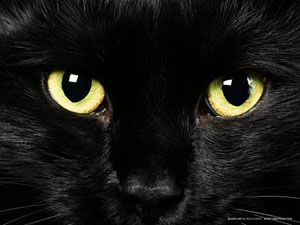 |
|
A resident near the church at Fanjeaux has created an image of a cat-like demonic apparition which sits on his windowsill. |
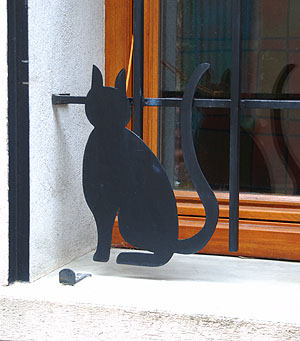 |
|
Saint Dominic preaching |
|
|
|
"It is because St. Dominic was pre-eminently a warrior, because he was rigid and uncompromising as regards the things of God, that he is looked upon as a forbidding, frowning figure by the historian." C. M. Antony, ST. DOMINIC'S COUNTRY, LIVES OF THE FRIAR SAINTS p xvii
Saint Dominic by Oswulf. In Catholic art, Saint Dominic is recognisable by a star over his head as well as his saintly auriole. He is generally accompanied by a dog with a lighted torch in its mouth, and is often shown carrying a chaplet of beads. According to a story invented long after his death, the Virgin Mary gave him such prayer beads during the Battle of Muret in 1213. |
 |
The Miracle of the Assassins - Cross of Sicaire
Once again a miracle permits Dominic to make conversions without having to produce an argument or refute the arguments of the Cathars.
Here, he engages a group of peasant "heretics" working in the fields who are unimpressed by his preaching and tell him to go away, he refuses and eventually they threaten to kill him. He welcomes martyrdom, and asks them to torture and mutilate him as well, which causes them to lose heart and they suddenly see the light.
The fervent desire for torture and martyrdom is a characteristic of many, perhaps most, medieval martyrdom legends.
|
The chemin Saint Dominic between Fanjeaux and Prouille |
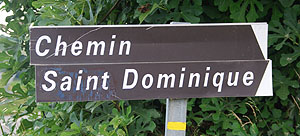 |
As in all of these miracles, they improve over the centuries so we always have a number of different versions - The miracle of the Storm may well preserve an earlier version of the same story. In the version below the the peasants have mutated into dedicated assassins, though they still carry their farming equipment.
Everyone knows the story of the would-be murderers who laid wait for St. Dominic, knowing well which way he would come, as he descended the hill of Fanjeaux one night after a long day's work, returning to his brethren at Prouille; how as he came — alone — they were smitten with awe at the sight of him, and their weapons — the harvest implements of peasants — fell from their shaking hands; how they cried out to the Saint, asking him what he should have done had they rushed upon him as they had intended, and his heroic answer: "I should have prayed you not to kill me with a single blow, but to prolong my martyrdom by cutting off my limbs one after another, so that I could see them before me; by then putting out my eyes; and, finally, by leaving all that remained of me still living bathed in my blood. For thus I should have gained a more glorious crown."
It was here, on this very spot, he spoke those words. This cross, which bears no inscription, renewed throughout the centuries, has stood here ever since.
C. M. Antony, ST. DOMINIC'S COUNTRY, LIVES OF THE FRIAR SAINTS p 59
According to modern Dominicans, Saint Dominic also sought out humiliation in place of martyrdom.
Brother Dominic always hoped to be martyred but thought himself unworthy. So he fled places of honor and drew near to mistreatment, where people would spit and throw filth at him.
Source: Dominican Sisters of St Cecila
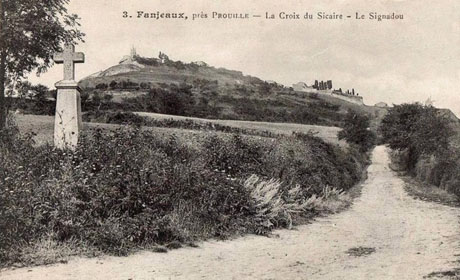
You might notice that the Cross of Sicaire that marks the very spot of the assassin miracle is itself miraculous. At different times it takes different forms and stands in different places. See the photographs above. There is another Cross of Sicaire outside the church in Fanjeaux.
|
Genuine murder attempts against Dominican Inquisitors were generally successful, as at Avignonet in 1242. In Italy the much hated Dominican Inquisitor Peter of Verona was murdered in 1252 and is now known as Saint Peter Martyr. He is generally shown with a cleaver through his head. This photograph shows an image of him in the Cloister of San Pedro de Verona, Villa de Etla, Oaxaca, Mexico with an axe rather than a leaver. |
 |
|
Dominic and the would-be assassins, |
 |
|
The Cross of Sicaire |
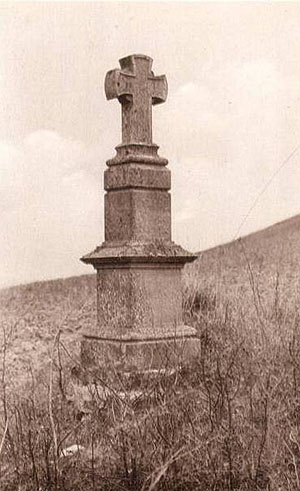 |
|
The Cross of Sicaire |
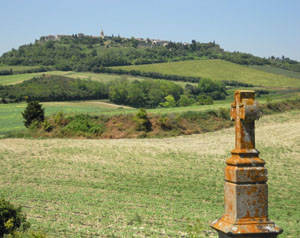 |
|
The Cross of Sicaire outside the church at Fanjeaux |
 |
Read more. Click to open in a new window
Jean Guiraud, SAINT DOMINIQUE ET LA FONDATION DU MONASTÈRE DE PROUILLE, Revue Historique, T. 64, Fasc. 2 (1897), Presses Universitaires de France. pp. 225-257. For the more serious scholar
C M Antony, In St Dominic's Country, Forgotten Books, 2013 (originally published 1912)
- pdf (incomplete and with annoying advertising)
- pdf (complete)
- docx (slightly flakey - OCR'd from a scan)
Catching Fire from Dominic's Vision. The Coming of the Preachers, Barbara Beaumont OP
Paper presented at a meeting of the International Commission of the Dominican Order, Prouilhe, France, April, 2006 celebrating the coming 800th anniversary of the foundations of the Order, largely about the founding of Prouilhe.
|
|
Photographs
|
Road sign in Fanjeaux |
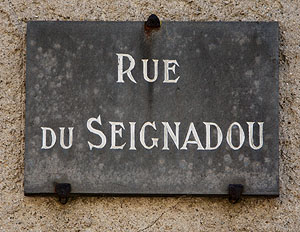 |
|
Road sign in Fanjeaux |
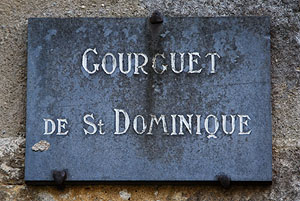 |
|
Road sign in Fanjeaux |
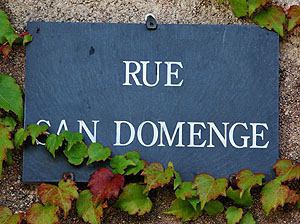 |
|
The Lauragais Plain, seen from Seignadou in Fanjeaux |
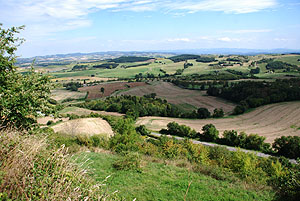 |
|
monument to the Miracle of Seignadou in Fanjeaux |
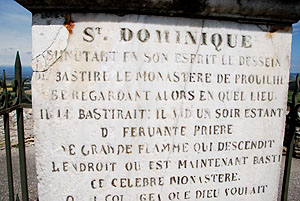 |
|
Fanjeaux Church, Notre-Dame de l'Assomption, Interior |
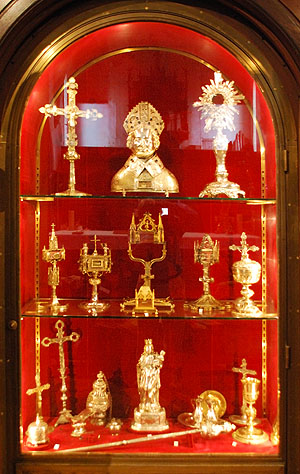 |
|
|
|
Fanjeaux Church, Notre-Dame de l'Assomption, Interior |
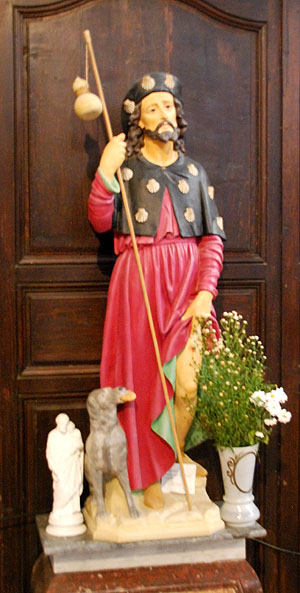 |
|
|
|
Fanjeaux Church, Notre-Dame de l'Assomption, Interior |
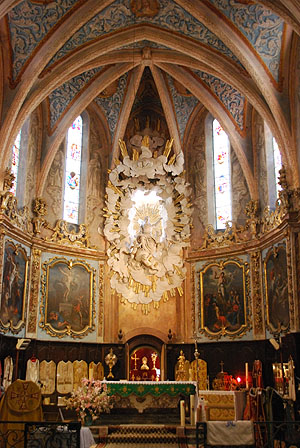 |
|
|
|
Fanjeaux Church, Notre-Dame de l'Assomption, Interior |
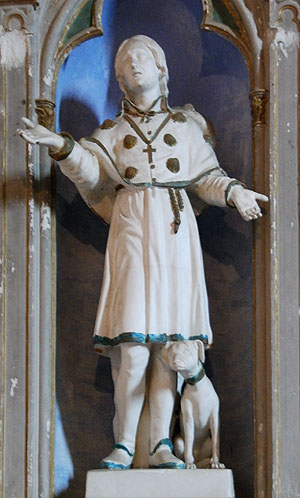 |
|
Fanjeaux Church, Notre-Dame de l'Assomption, Interior |
 |
|
Road sign in Fanjeaux |
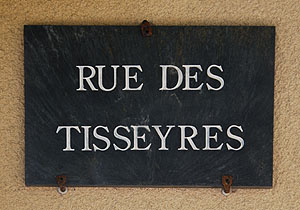 |
|
House of the "dominicaines de la Sainte-Famille" in the old couvent Des frêres prêcheurs in Fanjeaux |
 |
|
One of the many pilgrim routes to Compostela
|
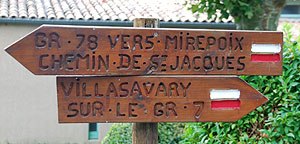 |
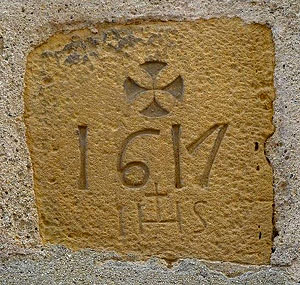 |
|
Fanjeaux Church, Notre-Dame de l'Assomption, Exterior |
 |
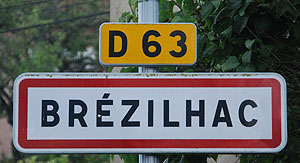 |
|
|
|
|
|
|
|
Dominic's "Miracle of the Book" |
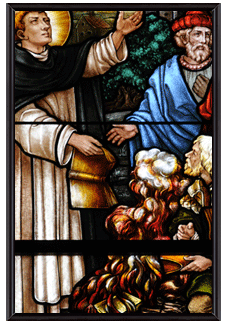 |
|
|
|
Monastery at Prouille |
|
|
|
The chemin de Saint Dominic (right) |
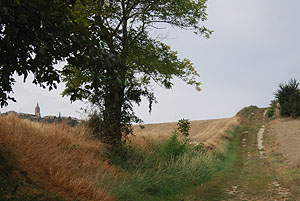 |
|
|
|
the "House of Saint Dominic" in Fanjeaux |
 |
|
|
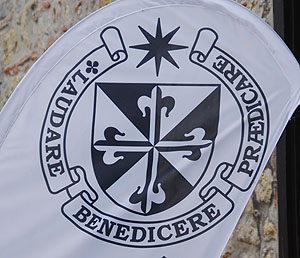 |
|
the "House of Saint Dominic" in Fanjeaux |
|
|
|
Looking from Seignadou toward the Pyrenees |
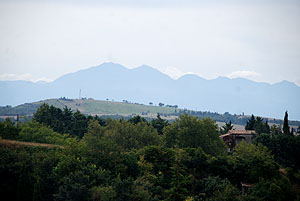 |
|
|
|
Looking from Seignadou toward the Bugerach |
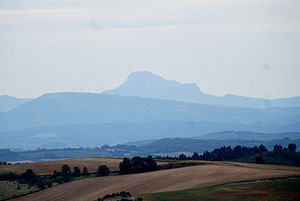 |
|
Looking from Seignadou toward Montreal |
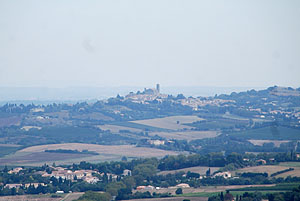 |
|
|
|
Looking from Seignadou toward Prouille |
 |
|
|
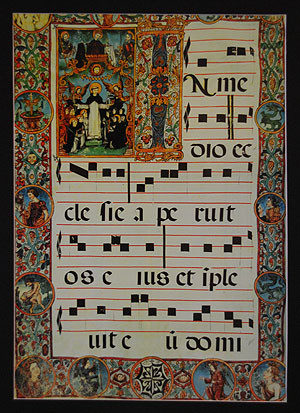 |
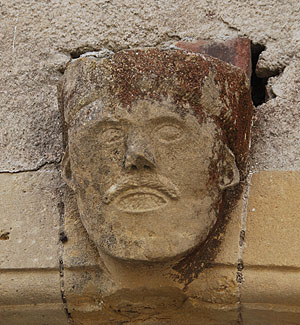 |
 |
 |
|
|
|
Detail of a Panel showing Saint Dominic, part of the large 'Demidoff Altarpiece' made for the high altar of San Domenico in Ascoli Piceno, east central Italy.Dominic wears the winter uniform of his order, a white habit and black cloak. The attributes that identifiy him as Saint Dominic are the lily (a symbol of chastity), and the book (which refers to his role as instructor). |
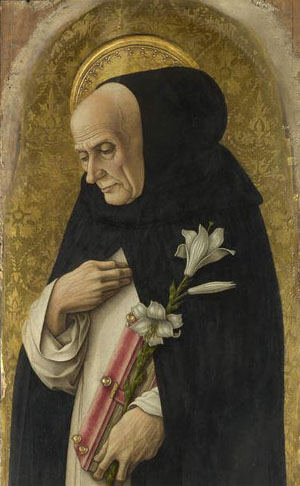 |
|
Road sign in Fanjeaux |
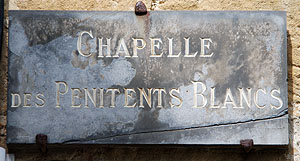 |
|
The Lauragais Plain, seen from Seignadou in Fanjeaux |
|
|
|
The Lauragais Plain, seen from Seignadou in Fanjeaux |
|
|
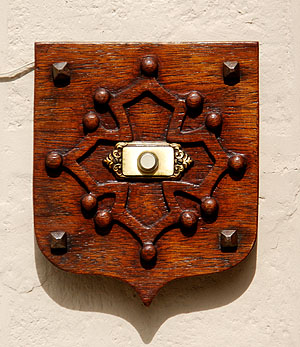 |
|
|
|
St Dominique du Cammazou |
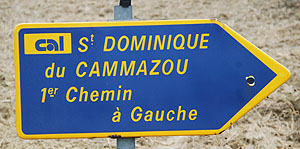 |
|
|
|
Fanjeaux Church, Notre-Dame de l'Assomption, Interior |
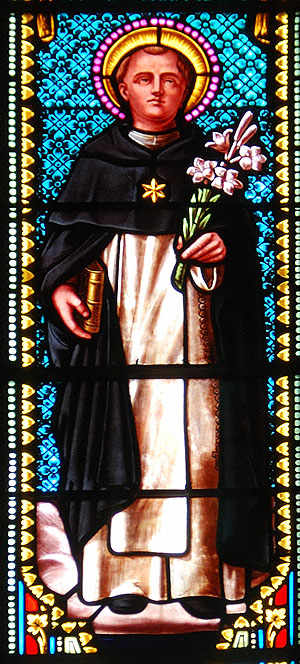 |
|
Fanjeaux Church, Notre-Dame de l'Assomption, Interior |
|
|
|
Fanjeaux Church, Notre-Dame de l'Assomption, Interior |
|
|
|
Fanjeaux Church, Notre-Dame de l'Assomption, Interior |
|
|
|
Fanjeaux Church, Notre-Dame de l'Assomption, Interior |
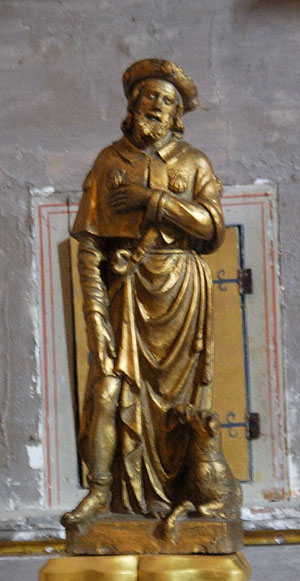 |
|
|
|
House of the "dominicaines de la Sainte-Famille" in the old couvent Des frêres prêcheurs in Fanjeaux |
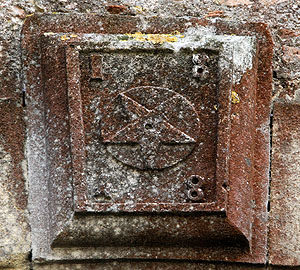 |
|
|
|
House of the "dominicaines de la Sainte-Famille" in the old couvent Des frêres prêcheurs in Fanjeaux |
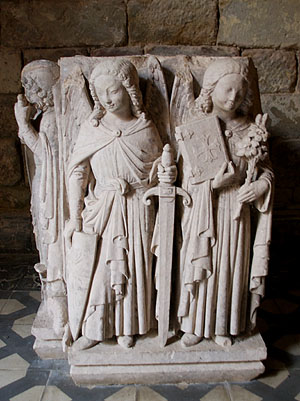 |
|
|
|
House of the "dominicaines de la Sainte-Famille" in the old couvent Des frêres prêcheurs in Fanjeaux |
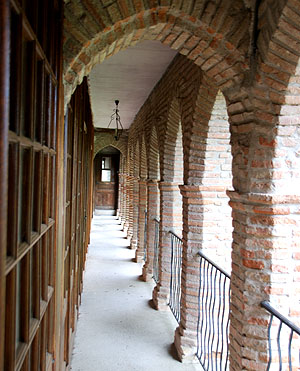 |
|
|
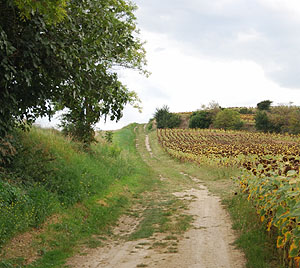 |
|
Old road to Prouille (left) |
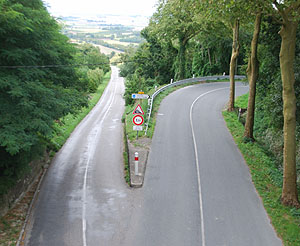 |
|
Saint Augustine of Hippo, an ex Manichaean,
trampling other Manichaeans underfoot. Like Sain Dominic, Saint Augustine is sometimes referred to as the Father of the Inquisition. |
 |
|
Renaissance engraving on wood, |
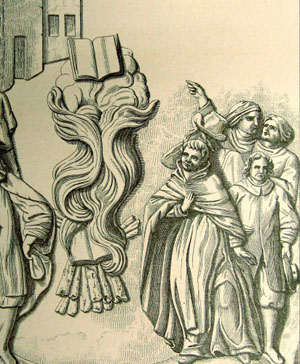 |
|
|
|
Stained glass window in the "House of Saint Dominic" in Fanjeaux |
 |
|
The Pope dreams of Saint Dominic saving the Catholic Church. Stained glass window in the "House of Saint Dominic" in Fanjeaux |
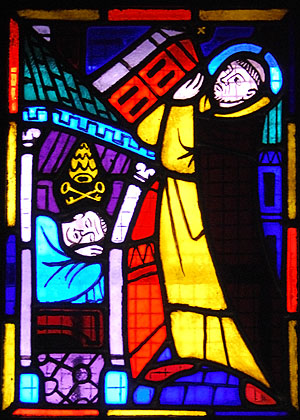 |
|
The Miracle of Seignadou. Stained glass window in the "House of Saint Dominic" in Fanjeaux |
 |
|
|
|
Dominic's Miracle of the Book (Le Miracle de Feu aka le Miracle de la Cédule). Stained glass window in the "House of Saint Dominic" in Fanjeaux |
|
|
|
The Miracle of the Black Cat You can just make out the demoonic cat climbing the bell rope in the background |
|
|
|
Stained glass window in the "House of Saint Dominic" in Fanjeaux. Miracle of the Sheaves (Miracles Des gerbes) |
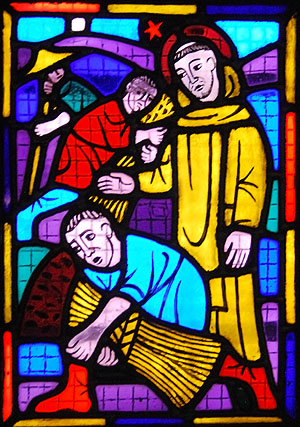 |
|
Saint Dominic sends out his followers in pairs (like the apostles and the Cathars). Stained glass window in the "House of Saint Dominic" in Fanjeaux. |
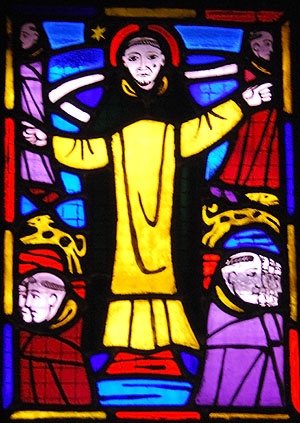 |
|
"Saint Dominic's House" |
|
|
|
|
|
"Saint Dominique habitat ici de 1206
a 1213" |
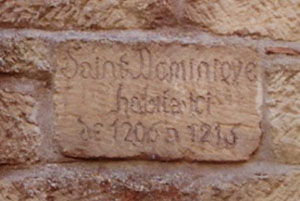 |
|
|
|
"Saint Dominic's House" |
|
|
|
"Saint Dominic's House" |
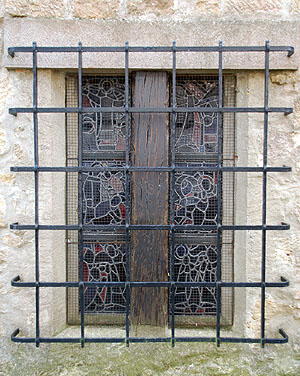 |
|
The Lauragais Plain, seen from Seignadou in Fanjeaux |
|
|
|
The Lauragais Plain, seen from Seignadou in Fanjeaux |
|
|
|
The Lauragais Plain, seen from Seignadou in Fanjeaux |
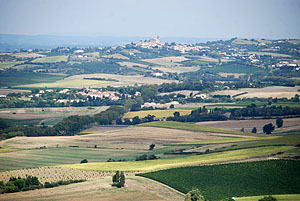 |
|
Fanjeaux Church, Notre-Dame de l'Assomption, Door |
 |
|
Fanjeaux Church, Notre-Dame de l'Assomption, Interior |
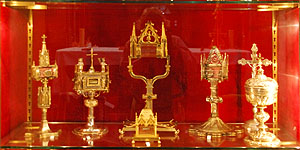 |
|
Fanjeaux Church, Notre-Dame de l'Assomption, Interior |
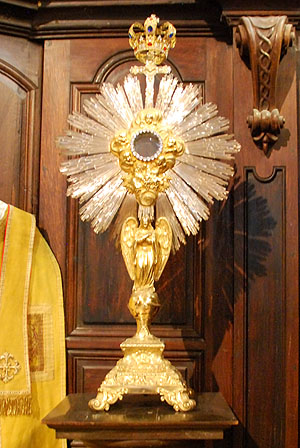 |
|
Fanjeaux Church, Notre-Dame de l'Assomption, Interior |
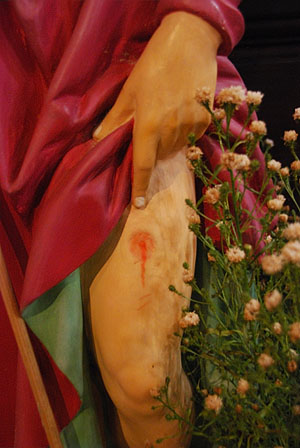 |
|
Fanjeaux Church, Notre-Dame de l'Assomption, Interior |
 |
|
|
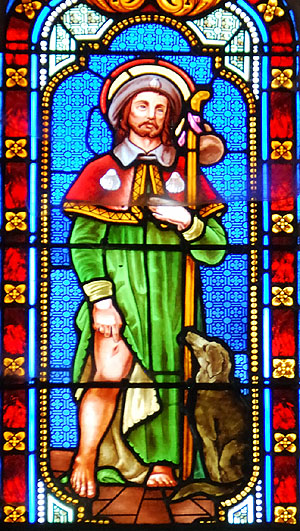 |
|
Road sign in Fanjeaux |
|
|
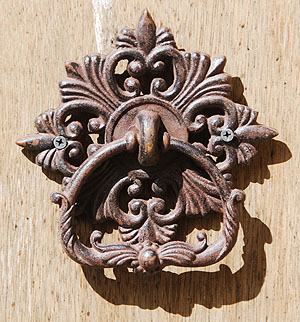 |
|
|
|
House of the "dominicaines de la Sainte-Famille" in the old couvent Des frêres prêcheurs in Fanjeaux |
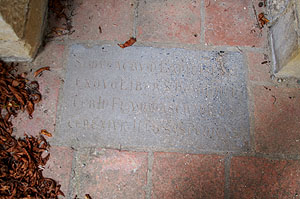 |
|
|
|
Fanjeaux Cross |
|
|
|
Monastery at Prouille, before the ivy was stripped off |
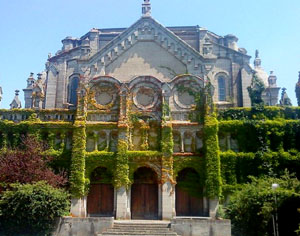 |
|
|
|
The "House of Saint Dominic" in Fanjeaux |
 |
|
|
|
relic in the "House of Saint Dominic" in Fanjeaux |
 |
|
|
|
relic in the "House of Saint Dominic" in Fanjeaux |
|
|
|
|
|
modona in the "House of Saint Dominic" in Fanjeaux |
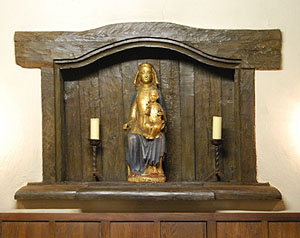 |
|
|
|
well behind the "House of Saint Dominic" in Fanjeaux |
|
|
|
Dominican coat of arms |
|
|
|
Saint Dominic fagellating himself in front of a statue of the crucified Jesus which squirtis blood from His wounds - one of Dominic's nine modes of prayer - shown in "St Dominic's House" in Fanjeaux. |
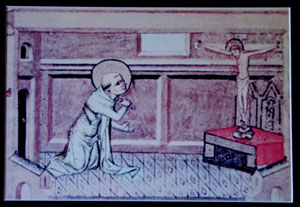 |
|
Saint Dominic prostrating himself before a statue of the crucified Jesus squirting blood from his wounds - one of Dominic's nine modes of prayer - shown in "St Dominic's House" in Fanjeaux. |
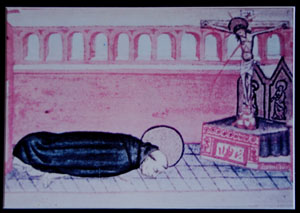 |
|
|
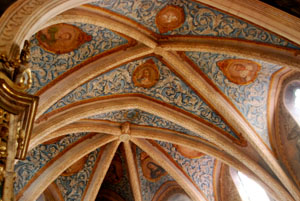 |
|
|
|
|
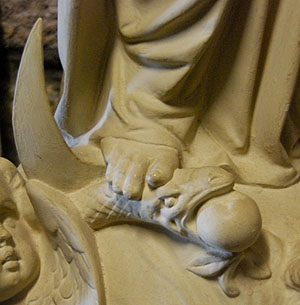 |
|
In the House of the Dominicaines of the Sainte Famille (on the site of the Convents of the Dominican Brothers - itself on the site of the Durfort Chateau) |
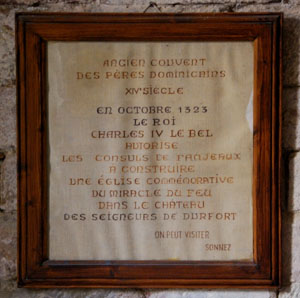 |
|
In the House of the Dominicaines of the Sainte Famille (on the site of the Convents of the Dominican Brothers - itself on the site of the Durfort Chateau) |
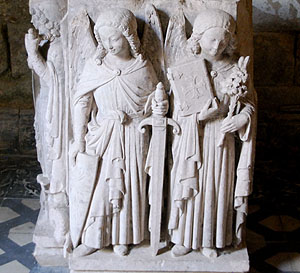 |
|
Pedro Berruguete |
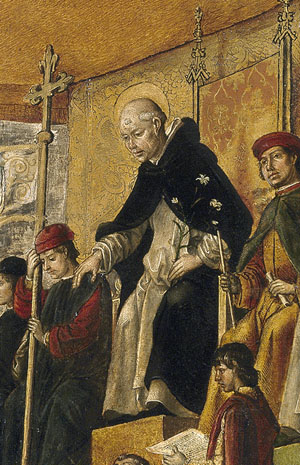 |
|
St. Dominic, 1515, Giovanni Bellini |
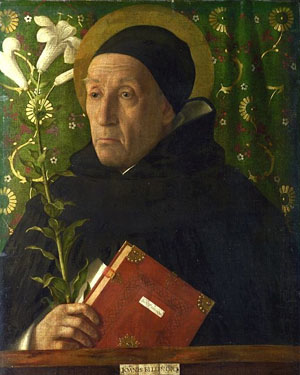 |
 |

|
|
|
|
|
|
|||||||||
| :::: Link to us :::: Castle and Manor Houses Resources ::: © C&MH 2010-2016 ::: contact@castlesandmanorhouses.com ::: Advertising ::: |



